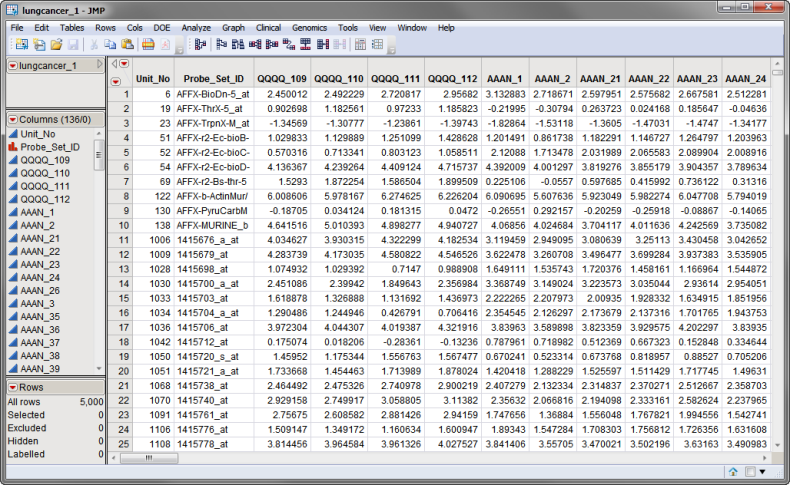Process Description
Batch Normalization
The Batch Normalization process normalizes data by establishing a batch profile based on averaging across within-batch-level control arrays and then using this profile to correct values across all arrays. K-Means clustering is applied for grouping batch profiles into clusters. The batch normalization is performed by correcting the within-cluster mean profile for each cluster. Standardizing for batch is an option before clustering batch profiles.
What do I need?
Two data sets are required for this process.
The first data set, the Input Data Set, contains all of the numeric data to be normalized. The lungcancer_1.sas7bdat data set, shown below, represents data collected in multiple independent studies over the course of several years. A total of 134 arrays representing animals treated or not treated (Control) with various dosages of different potentially anti-cancer agents and assessed for gene expression using 5000 different probesets. Data was collected from four different studies. Note that this is a tall data set; each probe corresponds to one row whereas each column corresponds to a separate experimental condition.

The second data set is the Experimental Design Data Set (EDDS). The exp_design_1.sas7bdat EDDS is shown below. This required data set tells how the experiment was performed, providing information about the columns in the input data set. Note that one column in the EDDS must be named ColumnName and the values contained in this column must exactly match the column names in the input data set.

The lungcancer_1.sas7bdat data set and exp_design_1.sas7bdat experimental design data set are included in the Sample Data\Affymetrix Lung Cancer folder.
For detailed information about the files and data sets used or created by JMP Genomics software, see Files and Data Sets.
Output/Results
The output generated by this process is summarized in a Tabbed report. Refer to the Batch Normalization output documentation for detailed descriptions and guides to interpreting your results.